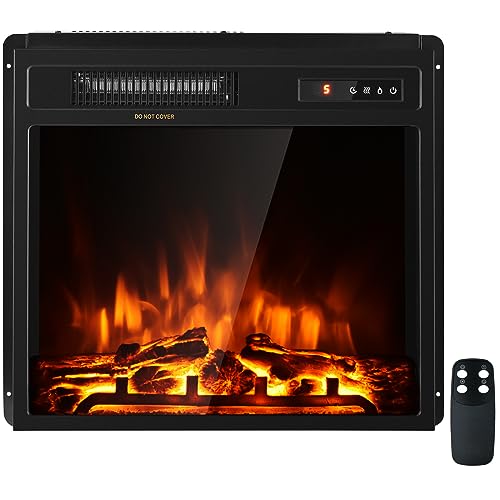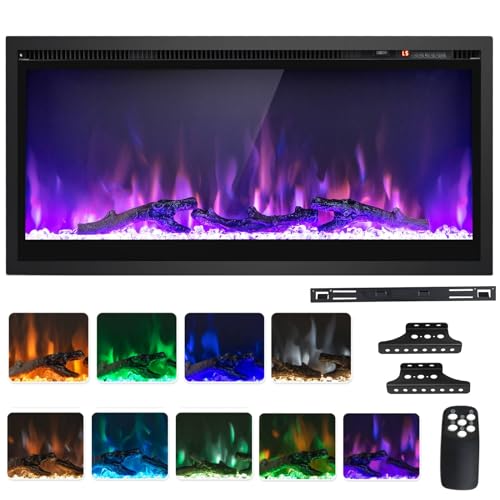9 Things Your Parents Teach You About Wood Heater Stove
페이지 정보
작성자 Garnet Lefkowit… 날짜25-01-31 16:12 조회6회 댓글0건본문
 Proper Use and Maintenance of a Wood Heater Stove
Proper Use and Maintenance of a Wood Heater Stove A wood stove is an excellent way to warm up your home, and it can also warm the entire home. Some of these devices emit harmful gases like creosote which can be dangerous for health and property.
A wood stove is an excellent way to warm up your home, and it can also warm the entire home. Some of these devices emit harmful gases like creosote which can be dangerous for health and property.It is essential to take care of these stoves. Some of the most important points to keep in mind include: avoiding overheating the room, not messing with the fire, and using appropriately dried firewood.
Fuel
Wood stoves can burn a variety fuels which include dry wood burning stoves uk as well as manufactured solid fuels, such as briquettes or fire logs. These alternative fuels that burn cleanly are less polluting than traditional household coal and wet wood, which means they are more eco-friendly and safer to use. However, they release toxic gases and smoke. They also require regular maintenance to ensure they are operating at their best.
Read the instructions of the manufacturer prior to buying or using any kind of fuel. Make sure it's the right fuel for your stove. Incorrect fuel could damage your chimney and stove, causing expensive repairs or invalidating the warranty. The use of a fuel that is not approved could also be unlawful, particularly in areas that control smoke. Look for the 'Ready To Burn logo, which demonstrates that the fuel meets the sulphur and smoke emission standards and can be legally sold for domestic use. The logo is often displayed along with the price and brand details or on the packaging.
Fuels that are suitable for burning must be seasoned or kiln dried to reduce moisture content. This will improve the heat output and efficiency of combustion. The type of wood chosen should also suit your heating needs. Softwoods such as spruce and pine provide good value heat, but hardwoods such as oak and beech produce greater quantities of hot embers over longer periods. Fruitwoods such as cherry and apple can not only be used to heat the home and provide an appealing scent.
If you have a multi-fuel stove, consider a mixed fuel stove; mixing smokeless briquettes with wood can help to keep the flames going and warm up your home for a longer period of time. The briquettes can be used as a back-up and also help keep a chimney from burning by keeping the air moving.
A stove that is maintained will produce more heat and burn less fuel while producing fewer harmful particles. If you have an oil or gas-fired wood stove, ensure that it is installed by an approved installer (on a competent person scheme like HETAS, APHC, BESCA, Certsure or NAPIT). A properly maintained appliance is more economical to run and protect your health and the environment by reducing harmful emissions.
Design
Wood stoves are an excellent source of heat, but their design is something to think about. Carbon monoxide and smoke are undesirable byproducts that may cause harm to health and the environment. Correct operation and careful design are the most important factors in reducing the emission.
Modern wood stoves are designed to be more eco conscious than traditional models. All EPA-certified stoves comply with strict emissions and energy efficiency guidelines that optimize the amount of heat they generate. You can check whether a wood stove is certified by looking for an cast iron wood burner EPA label on the back of the stove or by checking the EPA database. Visit local hearth product retailers who are aware of the performance capabilities of their inventory is also a great way to learn more about wood stoves and which size and capacity may be most suitable for your space.
One of the main components of EPA emission regulations is controlling the flow of air through the stove. The firebox of the stove is enclosed by fireproof walls, and there are air vents in these walls to allow for controlled airflow. Controlling airflow is crucial to ensure that the combustion is efficient and emissions are minimized.
A majority of modern stoves have a baffle that increases the time to burn the fire, which lowers smoke output and harmful gases. Certain indoor wood burning stove stoves employ catalyst converters to cut down on NOx emissions. This kind of system is a little more expensive and is typically only used in high-end wood stoves.
Stoves also utilize different types of air control systems to regulate the airflow in the stove. Most wood stoves use a basic air supply that is passive which requires that the user (you) manage the stove in a way that allows the Best wood burning stoves performance. Some wood stoves have active air sources that are controlled by sensors. These sensors monitor the combustion process, and adjust the air supply when required.
Wood stoves can be a fantastic alternative heating solution for homes in remote areas or those who are not connected to the electricity grid. If you don't have a backup source of heat in case of an outage or snow, then a wood stove shouldn't be your only option to warm your home.
Heat output
Many wood stoves are advertised with a peak heat output rate in BTUs. This is not accurate since the actual amount of heat produced of a wood-burning stove depends on many factors including the size of the room and how well insulated it is.
The climate also has an impact on the heat requirements. To keep warm, colder regions need stoves that have higher BTU ratings.
Other variables that affect heat production include the kind of wood used and Wood Heater Stove the frequency of refilling. Dry, seasoned firewood produces more heat than fresh cut and wet logs. A stove fan may aid in the circulation of heat produced by the wood burner in the room rather than have the hot air rise up.
It is important to remember that the peak output of a wood heater stove should not be a constant event as continuous high firing causes damage to the stove's interior and may cause carbon monoxide gas to leak into the home.
Regular refueling can also enhance the performance of an fireplace. When adding a new log, ensure that it's not too large and set it on the embers that are glowing so that it does not touch the walls of the stove or glass pane. It's also recommended to add smaller logs frequently instead of allowing too long between additions.
High efficiency stoves are engineered to achieve a higher level of heat output with the same amount of fuel by providing pre-heated combustion air and other design features. These stoves produce less carbon monoxide, toxins and smoke than older models.
Some people also opt to install a back boiler stove as part of their heating system. It uses the heat produced by the wood burning stove to heat the water in the hot water tank or central heating system, allowing heat to be distributed throughout a house. This is a cost-effective and cost-effective method of heating the home. However the installation process can take an extended time. This method requires a flue that is not already installed and the energy required to run the boiler will add to overall costs.
Safety
Wood stoves and fireplaces are a convenient and attractive way of heating your home. However, they're not free of dangers. Sparks and embers can spout out of a flame and ignite furniture or carpeting and a hot chimney can lead to destruction to the structure of your home. These risks can be avoided by maintaining and using an open fireplace that burns wood.
To ensure that wood-burning stoves remain safe and in good working order They should be regularly checked and maintained. This includes checking the flue and chimney at least once each year for signs of rust or wear and cleaning them. The chimney should be checked for creosote at the end of each season. It is extremely flammable, and can cause an explosion in the chimney.
When buying a conservatory wood burner-burning fireplace, choose one that is certified by Underwriters Laboratories or another recognized testing laboratory. This ensures that the stove complies with federal safety standards and is designed to ventilate properly. Also, you should check the legs, hinges and grates of a stove to ensure they are in good shape and are securely fastened to the floor.
If you decide to install a wood-burning fireplace in your home, make sure the floor underneath it is sturdy and made from non-combustible materials. You can also lay a non-combustible floor tile over your flooring in the event that it is inflammable.
Always burn only seasoned and dry hardwoods. Wood that is damp and green produces excessive smoke and creosote. This is a flammable byproduct that can build up in your chimney and release toxic chemicals into your home. Don't burn cardboard, paper, trash or any other combustibles on your wood stove, as they can create dangerous fumes, and they may not completely burn.
Never "over fire" your wood stovewhich is to generate a larger flame than the stove can handle. Over-fired stoves can lead to flames leaving the combustion chamber and causing damage to the chimney connector, the stove and the chimney itself, as well as burning other combustible materials in your home. It is also important to ensure that the fire is fully extinguished before leaving your home or going to bed. Finally, you should always have functioning carbon monoxide and smoke alarms in your house.
댓글목록
등록된 댓글이 없습니다.







